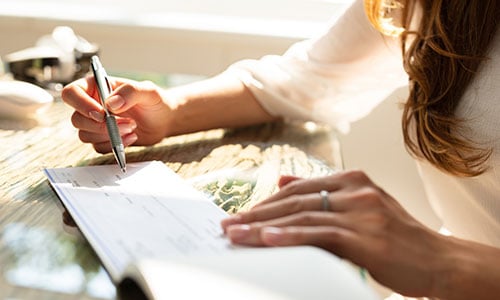
It’s important to understand the differences in checks, and when to use them. As financial responsibility increases, you may find you want the security, peace of mind, and proof that checks offer. These benefits are why checks continue to be the preferred payment method in many transactions.
What Is a Check?
A check is a written, dated, and signed instrument that directs a bank to pay a specific sum of money to the bearer. The person or entity writing the check is the payor or drawer, while the person to whom the check is for is the payee. Checks allow two or more parties to perform a transaction without the use of physical currency. Writing a check is a way to tell a bank to transfer funds from one account to another.
Why Are Checks Useful?
You can use checks to make payments, give as a gift, or transfer money between two entities. They are a secure way to transfer money, since the payee is the only one who can instruct the bank to transfer the funds to their account. However, if someone loses or steals the check, they cannot cash it.
Types of Checks
- Personal Check: This is issued by your bank and has your routing and account number on the check. The payor needs to fill out the blank check. The payee will then deposit the check in their account. This transfers funds from the payor to the payee.
- Certified Check: A certified check verifies that there are enough funds in the drawer’s account to honor the amount of the check. This guarantees that the check will not bounce due to insufficient funds.You can have the bank that issued the check certify it.
- Cashier's Check: A bank guarantees this type of check. A cashier signs the check, making the bank responsible for the funds. Cashier's checks are generally required in large transactions, such as buying a car or house. Banks or credit unions typically charge a fee for cashier's checks.
- Payroll Check: An employer issues a payroll check to compensate an employee for their work. Although direct deposit has replaced a lot of payroll checks, some companies still use them.
- Bounced Check: A check can bounce if a bank does not guarantee it. This occurs when the payor writes a check for an amount larger than what is available in their account. A bounced check will incur non-sufficient funds (NSF) fees.
- Voided Check: A voided check is a paper check with "VOID" written across the front. This prevents anyone from using the check for payment.
- Money Order: While not a check, a money order is a secure form of payment that represents an amount of money. You pay the full amount of the money order, plus a fee. Unlike a check, a money order is not directly pulled from your account.
What Is a Check Routing Number?
A routing number is a unique eight-digit sequence of numbers that identifies your bank. It ensures that the money goes to the correct bank. You can find it in the bottom left corner of the check.
How to Fill Out a Check
If you're new to check writing, here are the steps on how to write a check:
- Filling out a check starts by writing the date on the top right corner.
- Write the name of the person or business you're paying.
- Write the amount in numbers by the dollar sign, and in words on the line.
- You can choose to write the reason for the payment on the memo.
- Sign the check on the signature line to authorize the payment.
How to Order More Checks
If you’re in need of more checks, you can order them through a secure website or mobile app. Need help? Visit your local branch or contact your bank.